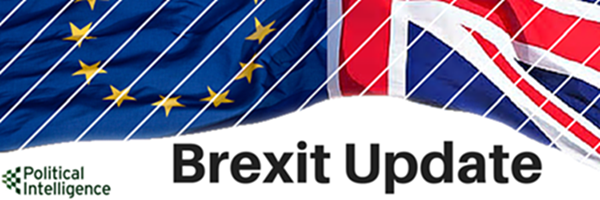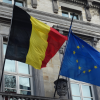Top 3 Developments
TM PM Wednesday PM – David Cameron held his final Cabinet meeting this morning and will deliver one last PMQs, before Theresa May becomes the Prime Minister tomorrow afternoon.
Labour NEC decide Corbyn’s fate – Following Angela Eagle’s slightly overshadowed leadership bid announcement yesterday, the Labour National Executive Committee are meeting to decide whether Corbyn will be on any future ballot. Either way the Party may end up in court, with both sides claiming to have the law on their side.
Carney grilled by Treasury Committee – Governor of the Bank of England, Mark Carney, today appeared in front of the Treasury Select Committee who had lots of questions about his contingency plans post-Brexit. When questioned about his position before the referendum Carney said it would have been ‘irresponsible’ not to highlight that Brexit was the single biggest risk to the economy.
Theresa May, Number 10’s newest resident
Tomorrow will mark the second occasion in British history that a woman has been appointed Prime Minister. Theresa May follows in the footsteps of Margaret Thatcher and the comparisons are already being made between two strong and independent female leaders. May was elected as MP for Maidenhead in 1997 and quickly rose up the ranks – she has been in charge of the shadow portfolios for education, employment, transport work and pensions and House of Commons leader, holding down the latter position whilst also serving as the first female chairman of the Conservative Party in 2002. Prior to entering politics, she worked in finance for the Bank of England and attended Oxford University after being educated primarily at state schools.
When she steps through the door of Number 10 on Wednesday she will be moving on from Home Secretary after more than six years. As the second-longest serving Home Secretary in history, she has built a reputation for being extremely focused and having an iron grip on her department, particularly on issues like immigration. At times she has been criticised for micromanagement, but praised for gaining a detailed knowledge of her brief and working hours that many would struggle to maintain.
Whilst launching her bid for Number 10 she made it clear that she is not flashy, but a serious leader for uncertain times and simply gets on with the job. Lacking a close knit clique in contrast to others, she still managed to receive overwhelming support from the parliamentary party, and this level of support contributed to the withdrawal of Andrea Leadsom from the leadership race. Some view the lack of a leadership contest as an issue that could have an impact on the potential for a General Election by the Spring and the lack of a contest has disappointed some on the right of the Party.
An insight into the type of Prime Minister she will be was evident in the campaign speech May gave yesterday, a detailed description of this speech is below.
May’s Vision for the UK
May set out her vision for the country in a speech yesterday, explaining from the outset that the outcome of the referendum was final and that Britain was “going to make a success of it”. Her central theme was one of undertaking the necessary social and economic reforms to realise a ‘one-nation’, centrist vision of “a country that works for everyone”, across the following four areas:
Reforming the economy: May pledged to make solving the UK’s ‘productivity puzzle’ a key objective for the Treasury and also wanted to see an energy policy that led to lower costs for customers, a stronger research and development policy to help firms invest, more Treasury-backed project bonds for new infrastructure projects, more housebuilding and a “proper industrial strategy”.
Putting people back in control: She wants to: ensure that British firms are protected from being sold off to foreign companies, put employee representatives on company boards, encouraging public sector works to set up mutuals and ensure the benefits of infrastructure decisions are shared with local people.
Giving people more opportunity: May intends to undertake further reforms to schools policy (and was due to set out her plans in the next few weeks) and has pledged to deal with the housing deficit.
Getting tough on corporate irresponsibility: In quite a bold step, May has pledged to make shareholder votes on corporate pay binding, is likely to call for more transparency including the disclose of bonus targets and the publication of pay ratios (between CEOs and average worker pay). She also cited competition law reform to ensure utility firms and retail banks, in particular, do not abuse their roles. She also committed to crack down on individual and corporate tax avoidance and evasion.
Who will make up May’s top team?
Many newspapers expect Foreign Secretary Philip Hammond to be appointed as the new Chancellor of the Exchequer. This would lead to George Osborne moving on – possibly in a job swap with Hammond, becoming the new Foreign Secretary.
May’s campaign manager and Leave campaigner Chris Grayling may end up as Home Secretary or as Brexit Minister.
Other May supporters including Amber Rudd, Damian Green and James Brokenshire will be hoping for significant roles.
The new PM will want to balance the mix of Brexiteers and Remainers in a concerted effort to unite the party following the referendum. Expect to see the Cabinet posts filled by Thursday.
Labour Leadership Chaos Continues
After days of rumours, Angela Eagle finally announced that she would be challenging Jeremy Corbyn for the Leadership of the Party. Whilst slightly overshadowed by Andrea Leadsom’s announcement she was pulling out of the Conservative race, Eagle gave a speech yesterday which called on her Party to unify behind her and put their internal struggles behind them.
These calls have thus far been ignored, with Eagle’s office being attacked overnight and the fierce arguments about Corbyn’s place on the ballot paper continuing. Labour’s 33-member National Executive Committee (NEC) is now meeting to decide whether Corbyn will be on the ballot, with the vote set to be close, even closer if the members are allowed to vote in secret.
Corbynites had tried to sure up their position overnight by having MP Jon Ashworth removed, however, this was blocked by the Shadow Cabinet. Decisively, Corbyn seems to have secured the backing of the 12 Union NEC Representatives with Unite General Secretary, Len McCluskey saying it would be a ‘sordid fix’ if Corbyn was kept off the ballot.
Whatever the result, it seems likely that the Party may end up in court, as Corbynites have already threatened legal action, whilst the rebels may block the NEC decision. There have also been rumours that former Shadow Work and Pensions Secretary, Owen Smith, may announce his candidacy once the NEC meeting is over, however, should Corbyn keep his name on the ballot it has been reported that Deputy Leader Tom Watson may pick one unity candidate.
Calm Carney rejects scaremongering accusations
Bank of England Governor Mark Carney gave evidence to the Treasury Select Committee today, his first since the referendum.
The most notable outer in the Select Committee is Jacob Rees Mogg MP who clashed with Carney in the pre-referendum inquiry the Committee were running on Brexit. He, and Chair Andrew Tyrie MP challenged Carney on whether the Bank showed political bias during the campaign, claims which were dismissed by Carney as ‘extraordinary’. Carney said that the Bank would be irresponsible not to highlight that Brexit was the single biggest threat to the economy and that all their analysis and conclusions were made independently from Government.
On the more pressing issue of what the Bank can do now, Carney said they have ‘tools’ to help keep the economy stable and this could mean extra quantitative easing (printing money to keep up liquidity) or lowering the interest rate.
Carney has been a soothing voice of calm in the last two weeks, and has been praised by all sides of the debate on how he calmed initial market jitters after the vote.
Timeline and Next Steps
Today: David Cameron spends his final full day in Downing Street, having chaired his final Cabinet. He is expected to draw up a list of resignation honours including appointing new peers that will take the House of Lords close to the 850 mark.
Tomorrow: The outgoing PM holds his final Prime Minister’s Questions (12pm). He will then tender his resignation to the Queen. Theresa May will arrive at Buckingham Palace thereafter where the Queen will invite her to form a Government. May will be the 13th, and 9th Conservative PM, during the Queen’s reign. Theresa May is then expected to move into Number 10 on Wednesday evening.
Key dates for the new PM:
18th July: Parliament due to vote on Trident renewal
20th July: Theresa May holds her first PMQs as Prime Minister
4th – 5th September: G20 Conference, China
5th September: Parliament returns from summer recess (21st July – 4th September)
2-5th October: Conservative Party annual conference
20th October: European Council meeting
Following Leadsom’s decision to drop out of the contest and Theresa May’s subsequent appointment as PM-in waiting, there have been calls for May to call an election to seek a democratic mandate – an early election is something she ruled out when launching her leadership bid. She will, however, be mindful that circumstances have changed since then and that the Conservative Party has a working majority of only 16 MPs. She may also think deeply about whether an election is required once the UK Government has thrashed out the terms of Brexit.




